The design of Scholastic’s new headquarters is reason enough to show up to the office
Picture your favorite storybook characters as though they had infiltrated an art museum: Harry Potter on a stained glass-like canopy, Captain Underpants as a dimensional sculpture, Katniss’s bow and arrow in silkscreen a la Andy Warhol.
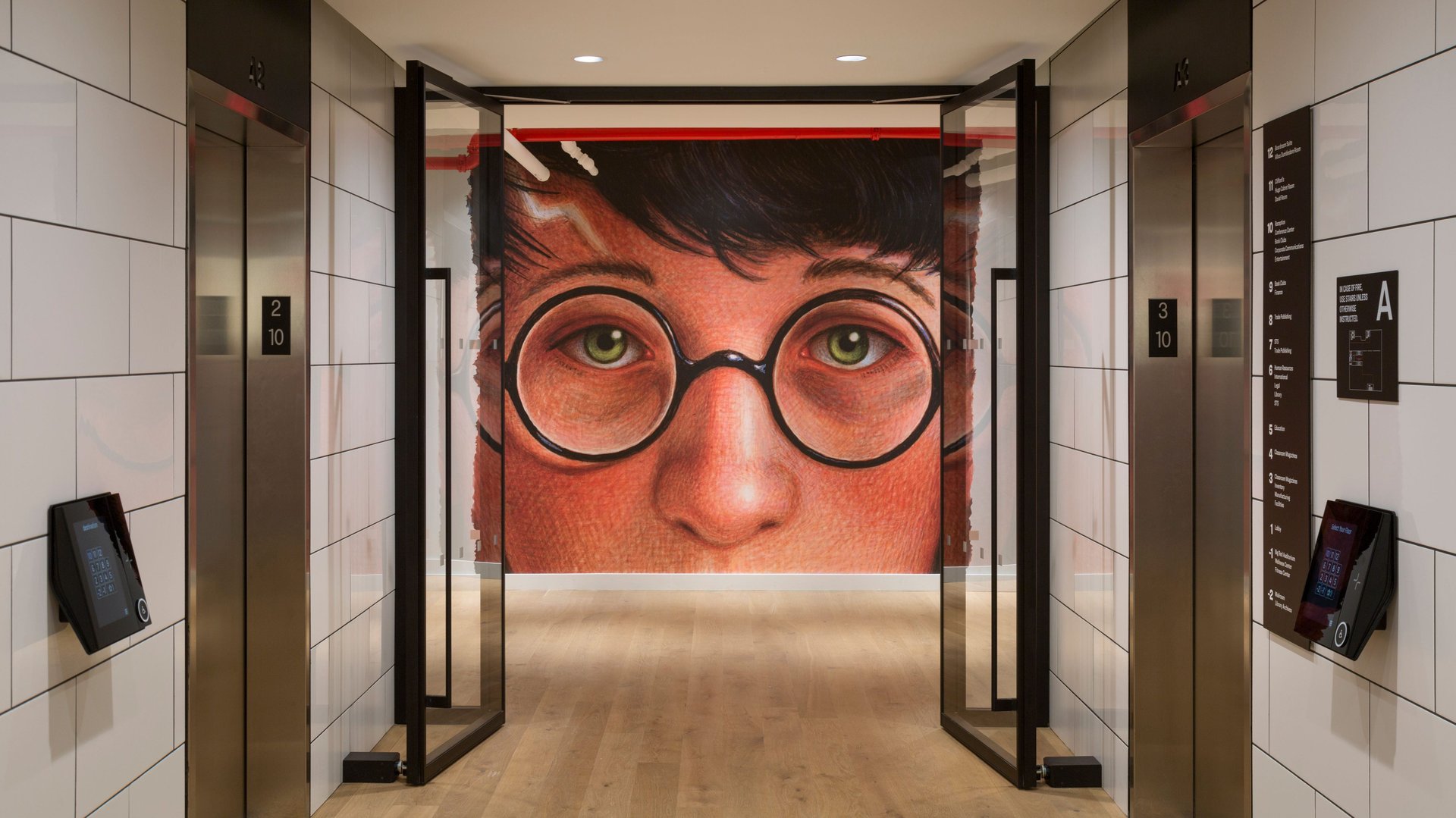

Picture your favorite storybook characters as though they had infiltrated an art museum: Harry Potter on a stained glass-like canopy, Captain Underpants as a dimensional sculpture, Katniss’s bow and arrow in silkscreen a la Andy Warhol.
This book lover’s dream gallery actually exists in Scholastic’s newly refurbished corporate headquarters in New York City. Designed by Pentagram partner Paula Scher, the space is as much an artful tribute to the mythic 98-year-old publishing brand as it is a treat to the employees who work there. It’s a resounding argument in favor of offices at a time when more companies are going remote.
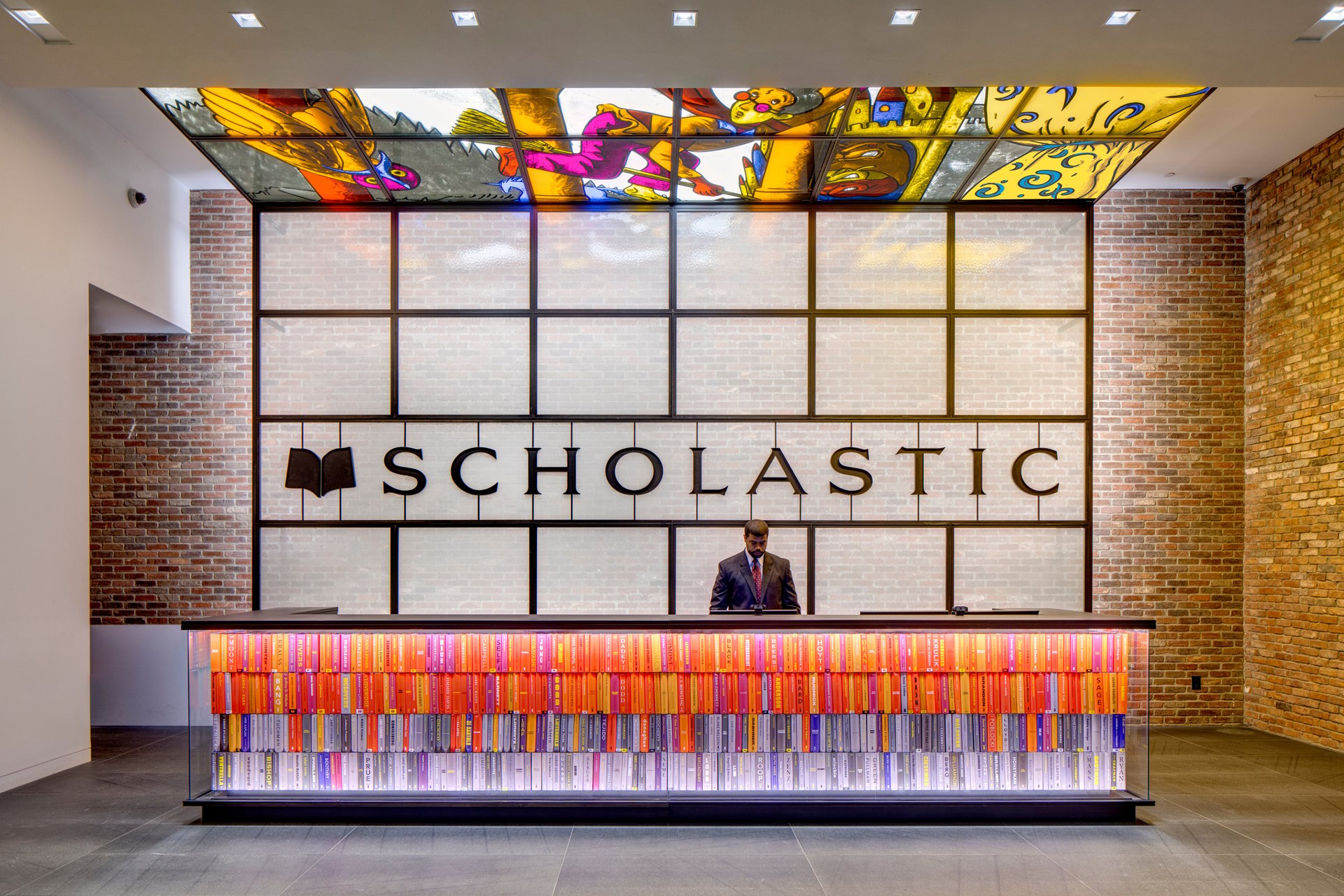
During her initial meetings, Scher observed that the office was decorated with blow-up prints of Scholastic’s characters. A master of scale and environmental graphics, Scher says that she puzzled over why enlargements of the otherwise beautiful children’s book illustrations didn’t translate well as office decor. “It took me a while to figure out why this wasn’t working. Why wouldn’t this be good?” she says. The answer came when she realized the disconnect between the form and the context. “Children’s books as objects are different and precious; they’re intimate things you hold and you allow yourself to go into them,” she explains. “They were never designed for the kind of scale the printout had.”
The renowned graphic designer knew that she had to think like a curator. “The minute you think about as a fine art installation, it changed the whole game,” Scher explains. In consultation with the original book illustrators, she commissioned artists to reimagine Scholastic’s band of beloved book characters.
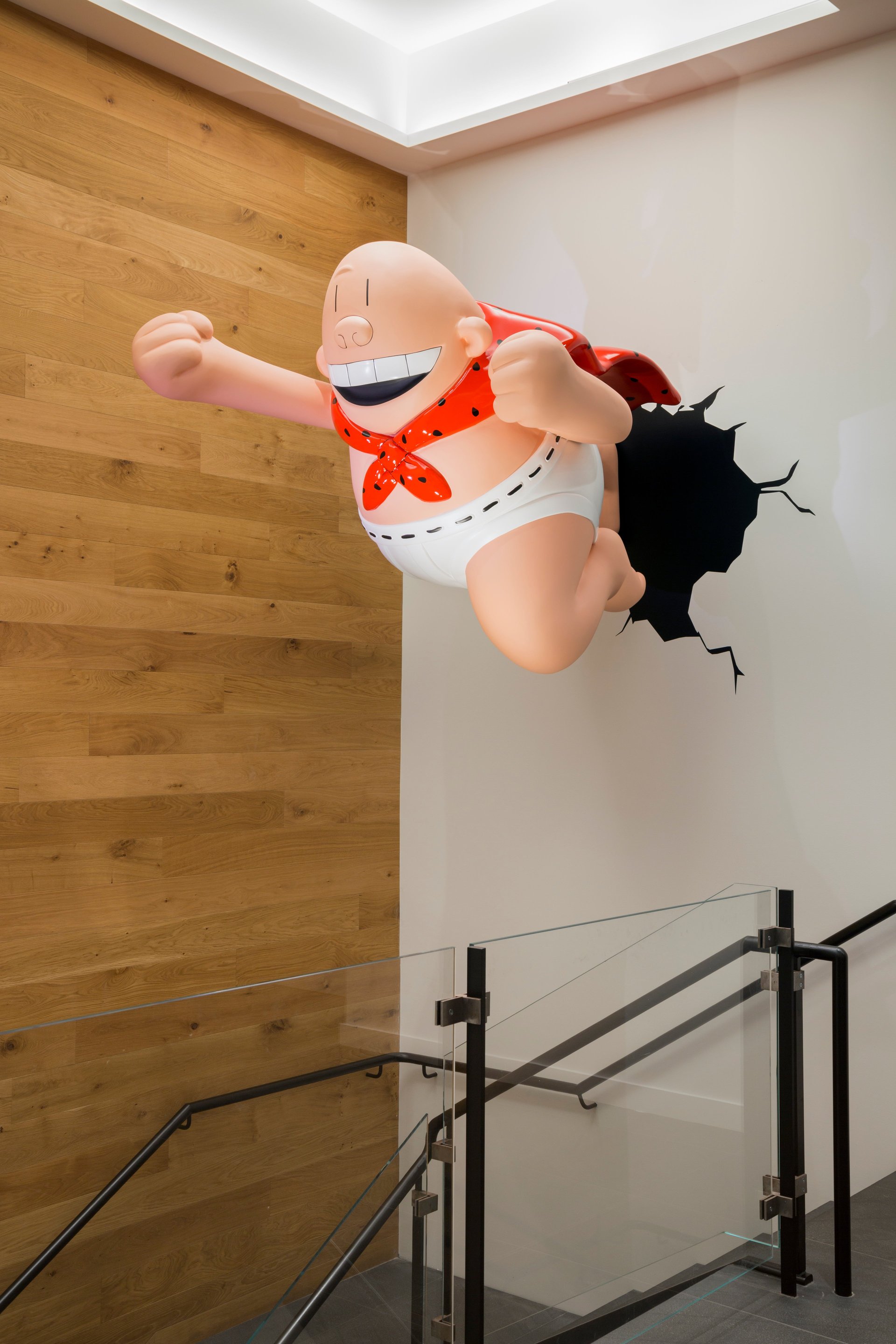
Appropriately, Scholastic’s most affable and iconic ambassador greets visitors on every floor. In each elevator bank, Clifford the Big Red Dog appears on seven-foot murals sewn with fur, so people can pet the walls. “It comes with its own cleaning instructions,” smiles Billy DiMichele, Scholastic’s SVP of creative development, who gave Quartz a tour. The murals are a charming nod to the old lobby, which featured a plush version of “horse-sized bloodhound” that visitors loved to pet.
Created by Norman Bridwell in the 1960s after his wife’s imaginary childhood friend, Clifford was among the first blockbuster hits for Scholastic, which was known then primarily for its youth-oriented magazine. Clifford is also honored in the staff canteen, which as been renamed for him with the requisite a furry signage hanging above the food counter.
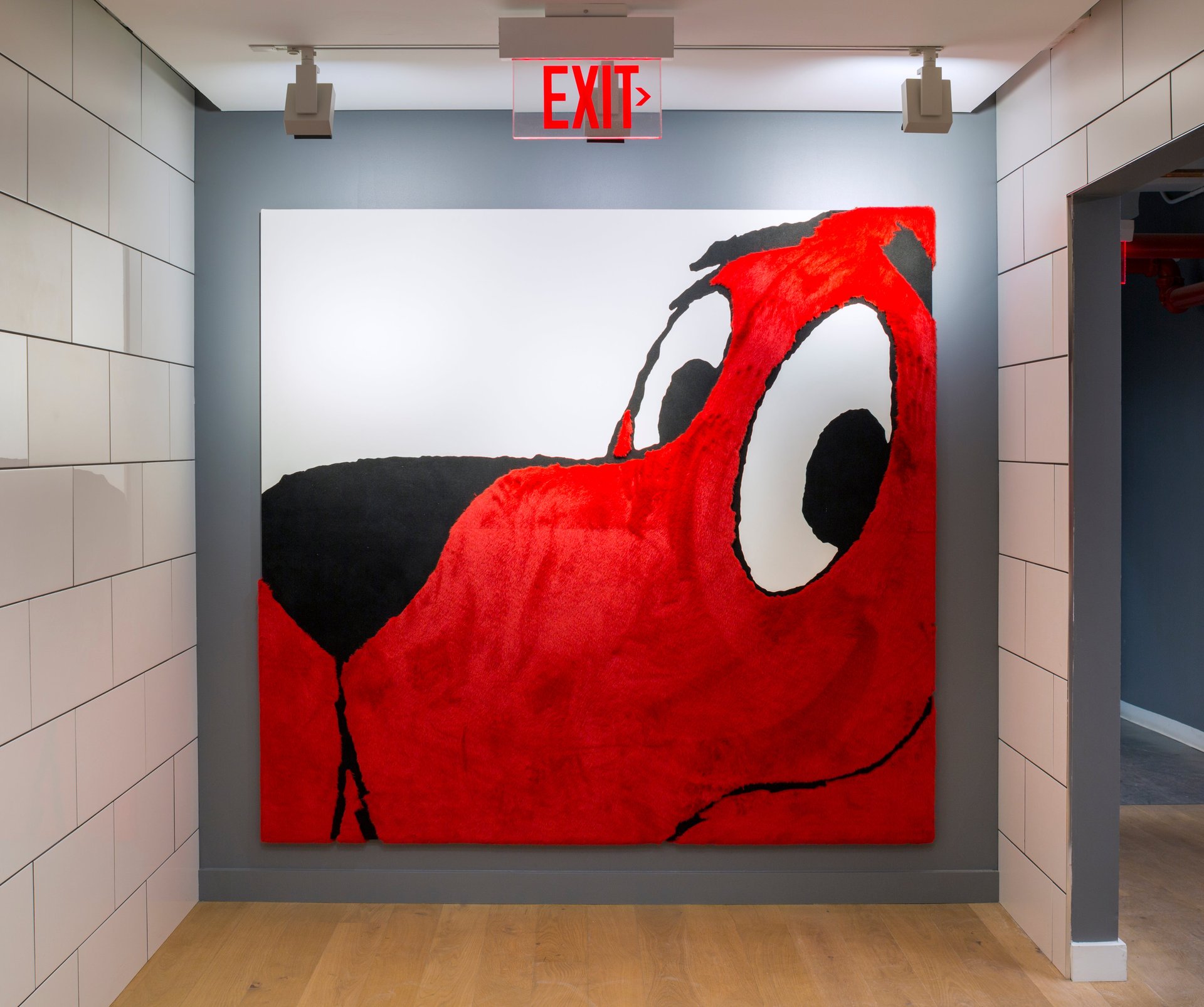
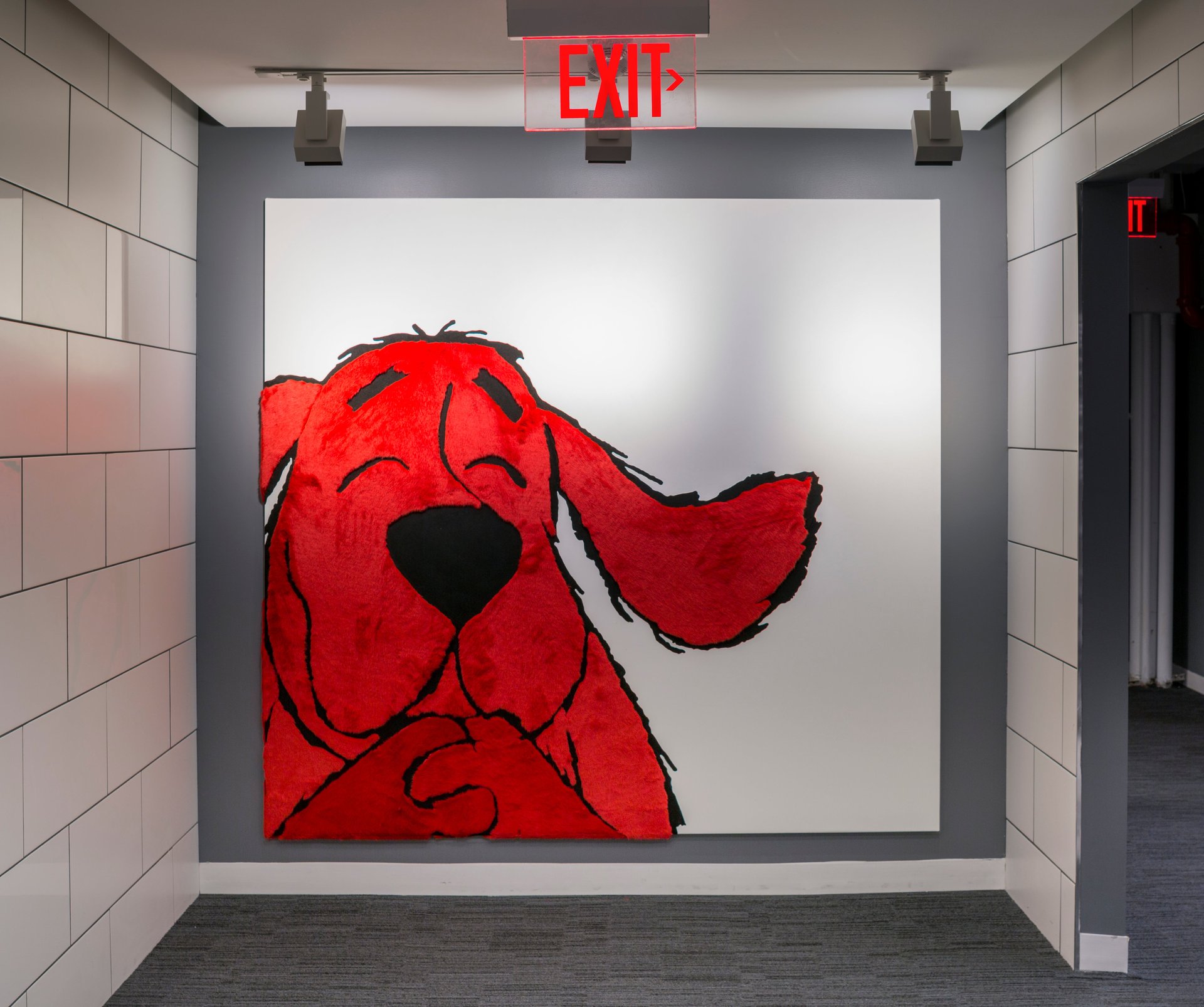
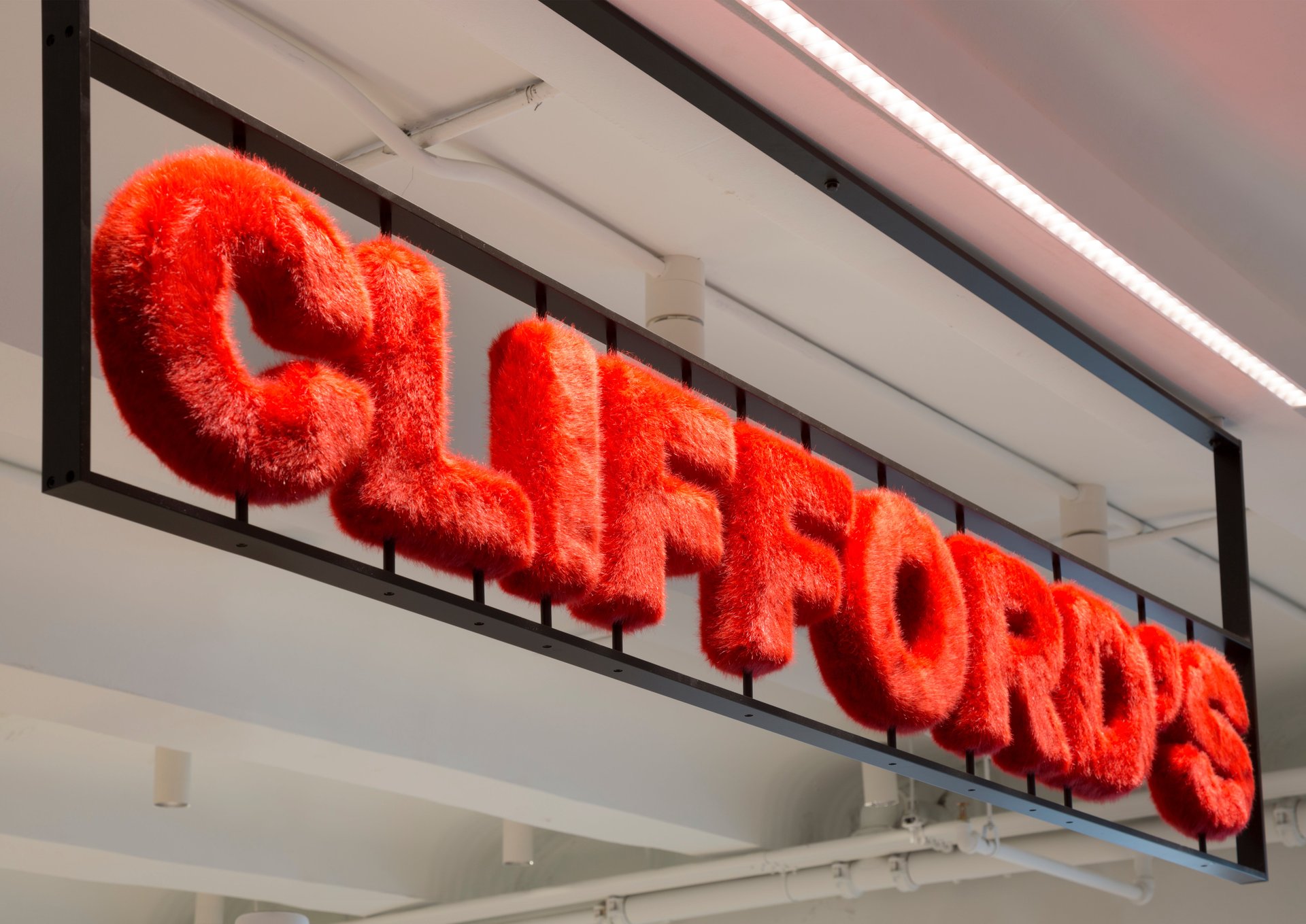
Another inspired touch was a portrait wall of characters, presented as if they were the company’s board of directors. In the center, Scher inserted a portrait of Scholastic CEO Richard Robinson, who has led the company since 1975. Scher recalls that Robinson didn’t exactly care for the clever tribute at first, but soon warmed up to the idea. “You could do it because the subject matter was there,” she says.
DiMichele, who worked with Scher and her team at Pentagram, says that the new office decor, along with the architectural renovation, has brought much delight to Scholastic’s staff. “We’ve created an atmosphere now where it’s a buffet of Scholastic characters,” he explains. “When all of this went up, our employees were so excited and posting it on their social media. They were were really proud.”
“It also gives you so many more reasons to look up from your phone,” adds Anne Sparkman, director of Scholastic’s communications department.
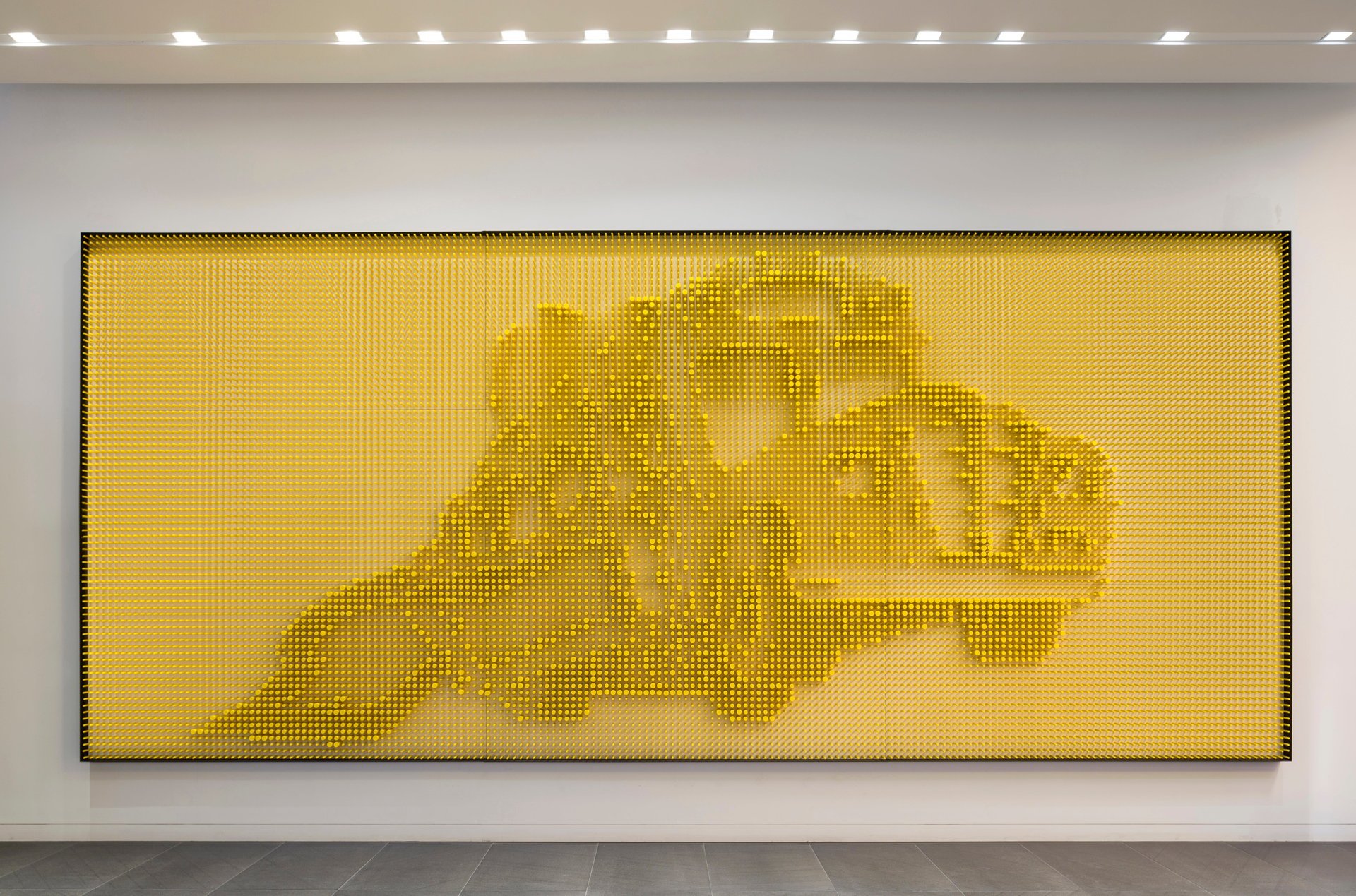
During a time when remote working is increasingly a norm, Scholastic’s delightful headquarters serves as a vivid argument for why showing up to the office is beneficial. If done well, offices can still be places of productivity, and creativity, and collective pride.
This pride is especially evident in Scholastic’s lobby desk. “Stand in front of that yellow picture and look at it through your phone,” suggested one guard, as he checked my ID. Through my smartphone’s screen, an abstract assemblage of wood pegs magically transformed into the Magic School Bus, a clever optical illusion that brings a smile to the mind. “It’s great isn’t it?,” the guard beamed. It really was.